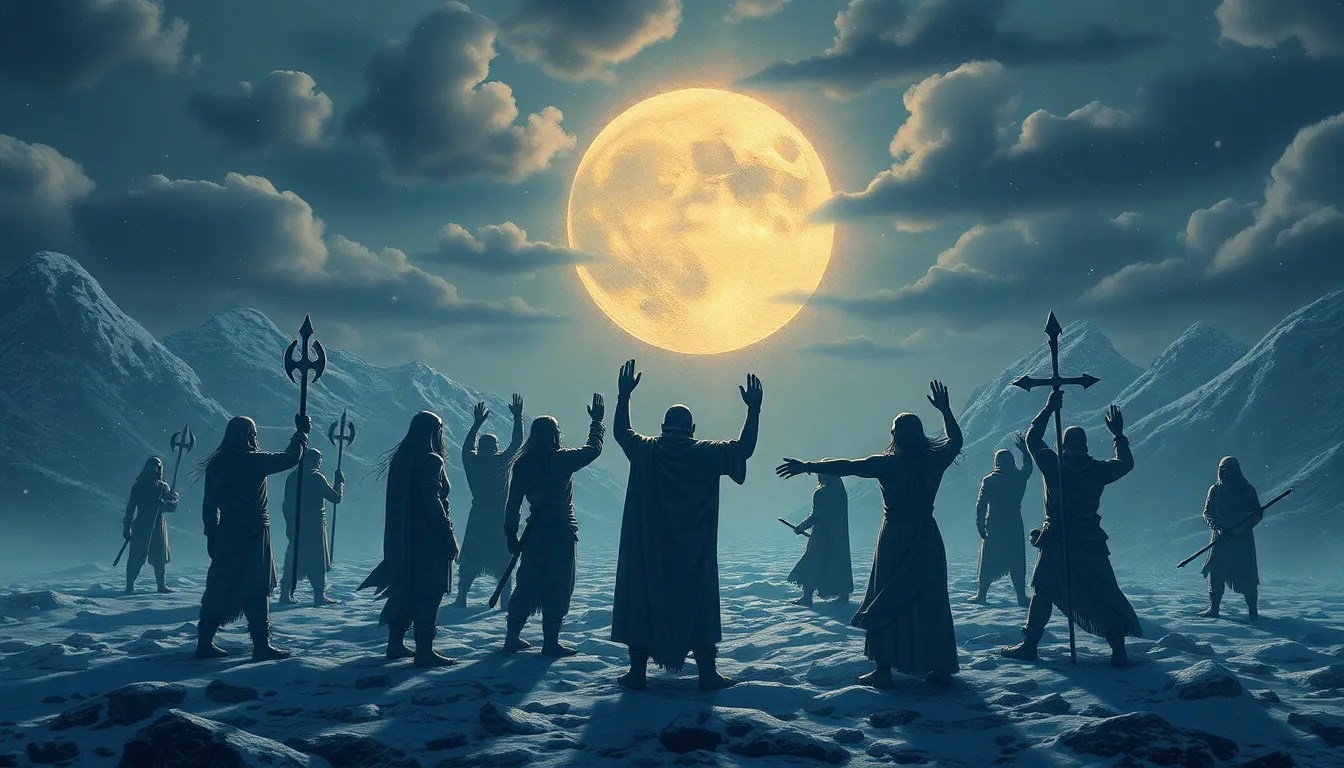Runes and the Power of Community: Strength in Unity
I. Introduction
Norse mythology, rich in symbolism and lore, serves as a window into the beliefs and values of the Viking Age. It encapsulates the spiritual and cultural heritage of the Norse people, illustrating their understanding of the world and the divine. Central to this mythology is the concept of runes, a system of writing that transcends mere communication and delves into the mystical and communal aspects of life.
Runes were not just letters; they were imbued with power and significance, reflecting the interconnectedness of language, magic, and community. This article explores how runes symbolize unity and strength within Norse society, highlighting their integral role in fostering communal bonds.
II. Understanding Runes: The Language of the Gods
Runes are the characters of the runic alphabets, which were used by the Germanic peoples, including the Norse, from around the 2nd century CE. The origin of the word ‘rune’ is believed to stem from the Old Norse term ‘rún’, meaning ‘mystery’ or ‘secret’.
The most famous runic alphabet is the Elder Futhark, consisting of 24 characters. Each rune is associated with a sound, a letter, and a meaning, making it a powerful tool for communication and expression in Norse culture.
Runes served various purposes, including:
- Written communication
- Magical inscriptions
- Divination and guidance
III. The Symbolism of Runes: More Than Just Characters
Each rune in the Elder Futhark embodies specific meanings and values that resonate deeply with the Norse people. For instance:
- Fehu (F): Symbolizing wealth and prosperity.
- Uruz (U): Representing strength and vitality.
- Thurisaz (Þ): Associated with protection and defense.
- Ansuz (A): The rune of divine communication and inspiration.
Runes are not just individual symbols; they represent collective values and shared beliefs that bind communities together. The practice of rune casting, where individuals interpret runes for guidance, often involves communal participation, reinforcing the idea that wisdom and insight are best cultivated in unity.
IV. Community in Norse Society: The Foundation of Strength
In Norse society, community was paramount. The Vikings lived in tight-knit groups, where cooperation and mutual support were essential for survival in the harsh Scandinavian environment. The structure of their society emphasized the importance of kinship and alliances.
Some key aspects of communal life included:
- Frequent gatherings for feasts and celebrations.
- Shared labor in farming, hunting, and crafting.
- Support networks during times of hardship or conflict.
These practices fostered a sense of belonging and unity among the Norse people, reinforcing their shared identity and cultural heritage.
V. Runes as a Tool for Community Building
Runes played a significant role in rituals and ceremonies that reinforced community bonds. They were often used in:
- Naming ceremonies, where runes would be inscribed to protect and bless newborns.
- Rituals for planting and harvesting, invoking the blessings of the gods.
- Funerary practices, where runes were carved on gravestones to honor the dead.
Additionally, storytelling and oral traditions were enriched by the use of runes, creating a shared narrative that united people across generations. Today, modern communities continue to explore the use of runes for unity and connection, often integrating them into rituals that celebrate heritage and foster communal ties.
VI. The Power of Unity: Lessons from Norse Mythology
Norse mythology is filled with tales that illustrate the strength found in unity. For instance:
- The alliance between gods and giants in the creation of the world.
- The teamwork displayed during significant battles, such as Ragnarok.
- Stories of deities like Thor and Loki, who, despite their differences, often worked together to overcome challenges.
These narratives emphasize the importance of collaboration, loyalty, and the power of unified action. They serve as reminders that contemporary communities can draw inspiration from these myths to foster solidarity and resilience in the face of adversity.
VII. Modern Interpretations of Runes and Community
In recent years, there has been a resurgence of interest in runes, reflecting a broader fascination with Norse mythology and culture. Many people today are rediscovering the wisdom embedded in runic symbols, using them for personal growth and community cohesion.
Contemporary communities are utilizing runes in various ways, such as:
- Workshops and retreats focused on runic studies.
- Creative arts, where runes inspire modern interpretations of ancient stories.
- Community circles that gather to explore shared values through the lens of runic wisdom.
The principles of community that the Norse people held dear are relevant today, encouraging us to build connections and foster unity in our diverse societies.
VIII. Conclusion
In conclusion, the significance of runes within Norse mythology extends far beyond their function as a writing system. They embody the strength found in community and the interconnectedness of individuals united by shared beliefs and values. The enduring legacy of Norse mythology reminds us that we are stronger together, and by embracing the wisdom of the past, we can enrich our modern communities.
As we reflect on the lessons of unity and strength from Norse mythology, let us take action to explore our own communities through the lens of runes and the shared values they represent. Together, we can forge bonds that echo through time, celebrating our collective heritage and the strength that lies in unity.



